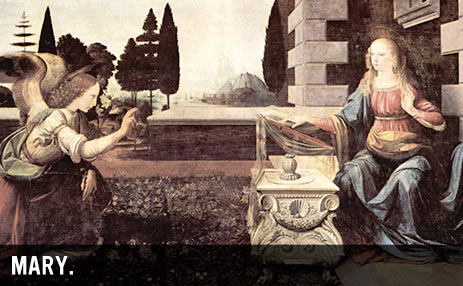Latest
-
Objections to the Christian Faith from the Unchurched and De-Churched
 Tue Dec 02, 2014
Tue Dec 02, 2014
by Resurgence -
Craig Groeschel: We Innovate for Jesus
 Tue Oct 14, 2014
Tue Oct 14, 2014
by Resurgence -
Mark Driscoll: Revelation
 Tue Oct 07, 2014
Tue Oct 07, 2014
by Resurgence -
RESURGENCE LEADERSHIP #034: JOHN PIPER, WHY I TRUST THE SCRIPTURES, PART 2
 Tue Sep 30, 2014
Tue Sep 30, 2014
by Resurgence -
Resurgence Leadership #033: John Piper, Why I Trust the Scriptures, Part 1
 Tue Sep 23, 2014
Tue Sep 23, 2014
by Resurgence

Archives
Vintage Saints: Mary, Part 1
"My soul glorifies the Lord and my spirit rejoices in God my Savior.” – Mary worshipping God in Luke 1:46–47  Each May it seems curious to me that many Protestant Christians do not focus on Jesus’ mother, Mary, in conjunction with the celebration of Mother’s Day. This may be, in part, an overreaction to the improper emphasis upon and false teachings about Mary among many Catholic and Orthodox Christians.
Each May it seems curious to me that many Protestant Christians do not focus on Jesus’ mother, Mary, in conjunction with the celebration of Mother’s Day. This may be, in part, an overreaction to the improper emphasis upon and false teachings about Mary among many Catholic and Orthodox Christians.
"The Second Eve"
In the second century, Irenaeus depicted Mary as a “second Eve,” laying a foundation upon which later theologians would build an unbiblical view of Mary, including Cardinal Newman who rediscovered the image in the nineteenth century. Also, in the second century, the baptismal creed began referring to Jesus as “Born of the Holy Spirit and the Virgin Mary.” By the fourth century, some churches were being dedicated to Mary. In the fifth century, the Council of Ephesus declared Mary the “mother of God,” which further encouraged devotion to Mary. In the eighth century, Germanus of Constantinople said that Mary dispenses grace to the church on earth, and also taught, along with others, that Mary was Mediatrix, meaning that she participated in saving people along with Jesus. In the twelfth century, Bernard of Clairvaux helped to popularize the idea that Mary dispenses grace to Christians, and the “Hail Mary” prayer was introduced and combined with the Rosary. In the fourteenth century, the title Coredemptrix first appeared in Catholic literature, speaking of Mary as participating with Jesus in our redemption (this concept continued gaining popularity, and in more recent times the late Pope John Paul II spoke of it on multiple occasions).
Spiritual Motherhood
In the fifteenth century, Pope Sixtus IV spoke of the spiritual motherhood of Mary over all Christians and the “Hail Mary” prayer was changed to its current form. In the nineteenth and twentieth centuries, shrines dedicated to Mary appeared in places such as Lourdes, France, and Fatima, Portugal. In the twentieth century, Pope Pius XII declared that Mary ascended into heaven like Jesus, called for the memorial of Mary’s role as queen dispensing grace to Christians, and said that she was so united with Jesus that she was involved in His suffering and our salvation. The Catholic Church also held a congress on Mary and sponsored pilgrimages to some of the shrines dedicated to Mary. Having been raised as a Catholic, I did pray to Mary as a young boy. Once I met Jesus at the age of nineteen, though, I was convicted that I had sinned against God by praying to anyone but Him. In some ways I then overreacted for a few years and did not esteem Mary as I should have. Sadly, it seems that many Christians are also prone to the extremes of either esteeming Mary too much or esteeming her too little.
What Does Scripture Say?
The key to undoing all of the false teaching surrounding Mary is, of course, to simply look at what Scripture does say about her and add nothing to that. Mary appears by name in three of the four gospels (the Gospel of John refers to “Jesus’ mother”) and the book of Acts. She was a young virgin girl, perhaps even a young teenager, in fulfillment of the prophecy of Isaiah 7:14. Continue to Part 2.